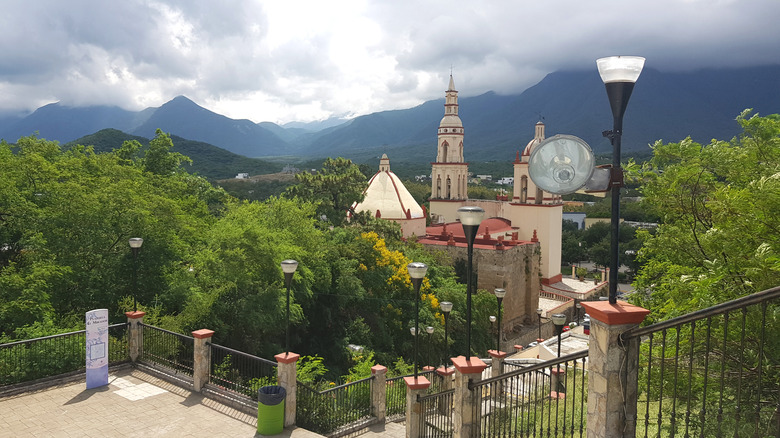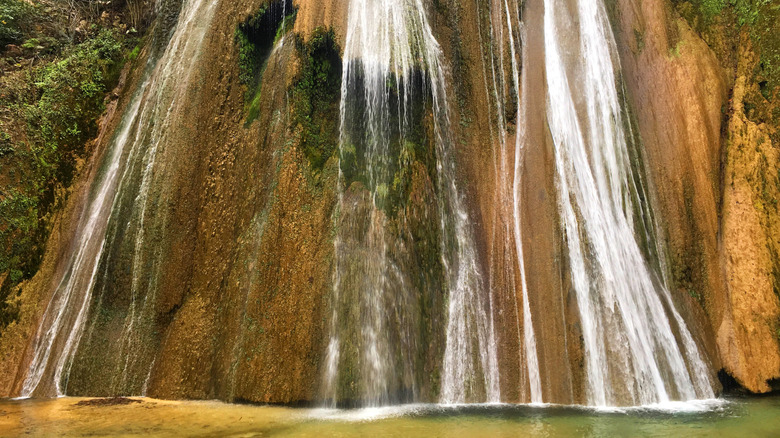The Fairytale Mexican Town With A Famous Waterfall, Cobbled Streets, And Historic Significance
We may receive a commission on purchases made from links.
Spanish settlers established Villa de Santiago in 1577. When you stroll the stone streets of this beautiful Mexican city, you may wonder whether anything has changed since. The colonial buildings are painted in vibrant hues, and many still bear the old-fashioned balconies and casement windows. A flared stone staircase leads to the entrance of the Villa de Santiago Church (pictured), and a mountain range dominates the horizon. The romantic architecture and epic scenery look like the set for a Zorro movie. Indeed, this region is one of the best in Mexico for history buffs to travel to.
Getting to Villa de Santiago takes some effort, given its obscure location. Most visitors will fly into Monterrey, a city of 1.1 million people that stands about 25 miles to the north. Villa de Santiago is arguably a suburb of Monterrey, the third-largest city in Mexico, but driving will take about an hour from Monterrey International Airport. Nuevo León is a smallish state in the northeastern part of the country, and although it lacks the beaches and piña colada-infused party scene of the Caribbean coast, the spectacular mountain scenery, quality dining options, and wealth of cultural institutions make Nuevo León a great destination for thoughtful travelers. Monterrey's airport also services direct flights to numerous US cities.
Nuevo León is considered a fairly safe region for tourists compared to crime-addled states like Guanajuato and Michoacán. Take the usual precautions in Monterrey and even Villa de Santiago, especially at night. Also, keep your requisite tourist card secured.
Eco-parks, lake boating, and more
The most iconic landmark in Villa de Santiago is the Cola de Caballo Waterfall, which slides 82 feet down a grainy rock face. A walking bridge crosses directly in front of the falling water, allowing you to see the cascade up close. "Cola de Caballo" is Spanish for "the horse's tail," and the splay of rivulets bears a striking resemblance. It's possible to find the waterfall on your own, but the easiest way to visit this natural wonder is with an organized tour through Viator.
Throughout the six-hour excursion, guides will take you directly to the falls and recount the centuries-old history of the site. You will then head over to the Presa la Boca Reservoir, where a catamaran will carry you across the placid waters of this artificial lake. Finally, your guide will lead you on a walking tour through the streets of Villa de Santiago; the promenade ends with a beloved, locally churned ice cream. As one participant said, "The waterfall was beautiful, and afterwards we got to swim and play under different falls! We will definitely be back!"
English-speaking guides will help you break the ice with locals, and they can recommend places in Villa de Santiago to eat and hang out later on. Many residents speak English as well, especially in the well-trafficked areas. If you haven't brushed up on your Spanish, here is Rick Steves' advice for traveling to a destination where you don't speak the language.

